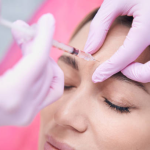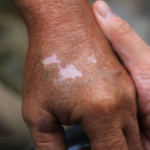Understanding the right order to apply skin care products is crucial to maximizing their benefits and transforming your skin’s health. This article sheds light on the optimal sequence to follow during your daily skin care routine. Fundamentally, this sequence helps in ensuring that the skin absorbs all the beneficial ingredients effectively. We will cover each step, from the basic cleansers to the more targeted treatment products, and explain why each product deserves its particular spot in the lineup. By the end of this guide, you’ll have a complete understanding of how to layer your skin care like a pro.
Understanding the Basics of Skin Care Layering

To begin with, a fundamental rule in skin care is to apply products from thinnest to thickest consistency. This allows the skin to absorb each product properly without barriers. It’s also important to differentiate between water-based products, which should be applied before oil-based ones, as water cannot penetrate oil. Follow this principle, and you’ll set a strong foundation for the rest of your routine.
Step-by-Step Guide to the Ideal Skin Care Application Order
- Cleansing:Start with a clean slate by washing away impurities with a gentle cleanser.
- Toning:Balance the skin’s pH and remove any lingering residues with a soothing toner.
- Serums and Treatments:Apply any specialized treatment products that target specific skin concerns.
- Eye Cream:Care for the delicate eye area with a nourishing eye cream to address dark circles, puffiness, or fine lines.
- Moisturizing:Seal in moisture and active ingredients with a hydrating moisturizer suited for your skin type.
- Sun Protection:During the day, finish off with a broad-spectrum sunscreen to protect against harmful UV rays.
Each step holds its own importance and contributes to the health and protection of your skin. Applying products in this order ensures that each one can perform without interference from others. Now, let’s dig deeper into each step and explain why the sequence matters.
| Step | Product Type | Reason for Sequence |
|---|---|---|
| 1 | Cleanser | Removes dirt and oils, prepping the skin for subsequent products. |
| 2 | Toner | Restores pH balance and helps next products penetrate better. |
| 3 | Serums/Treatments | Delivers active ingredients directly to clean, primed skin. |
| 4 | Eye Cream | Specifically formulated for the sensitive eye area. |
| 5 | Moisturizer | Hydrates and locks in the benefits of the earlier steps. |
| 6 | Sunscreen | Creates a protective barrier against UV damage. |
Special Considerations
When integrating exfoliants and masks into your routine, it’s usually recommended to use them after cleansing but before other treatment products. This ensures that they work efficiently on a clean base. If you’re using prescription products, always follow your healthcare provider’s guidelines for their placement in your routine. And remember to tailor your morning and evening routines as some products, such as those containing retinoids, are best used at night.
Common Mistakes to Avoid When Layering Skin Care Products

Layering skincare products can maximize their benefits, but incorrect application can lead to reduced effectiveness or even skin irritation. To get the most out of your skincare routine, be aware of these common layering mistakes:
- Not Applying Products in the Correct Order:Always apply products from thinnest to thickest texture. Start with water-based serums and end with heavier creams or oils to ensure proper absorption.
- Using Incompatible Ingredients:Some ingredients can deactivate others or cause irritation when mixed. For example, retinol should not be used with vitamin C, and benzoyl peroxide should be avoided with retinoids.
- Overloading the Skin:Applying too many products can overwhelm the skin, leading to clogged pores and breakouts. Stick to essential products and allow each layer to absorb fully before applying the next.
- Skipping Wait Times:Some products need time to activate on the skin before the next layer is applied. For instance, letting acid exfoliants sit for a few minutes can prevent pH levels from being disrupted by subsequent products.
- Ignoring Product Expiry Dates:Expired products can be less effective or harmful. Always check expiry dates and the texture, color, or smell of products before using them as part of your routine.
Conclusion
To conclude, proper application order is a key factor in a successful skin care routine. Starting with cleansers and ending with sunscreen during the day, this sequence helps each product to work at its best. Although every skin type is unique, and routines may vary, following these guidelines will provide a solid foundation upon which you can build a routine tailored to your skin’s specific needs.
FAQs: Perfecting Your Skin Care Routine
Many questions arise when perfecting your individual skin care strategy. Here are the answers to some common queries:
- Q1: Can I skip certain steps if I’m in a rush?
- A1: While it’s ideal to follow each step, when pressed for time, focus on cleansing, moisturizing, and sun protection as your core steps.
- Q2: How long should I wait between applying different products?
- A2: It’s beneficial to wait a minute or two between applications, particularly when using treatments with active ingredients.
- Q3: Is it necessary to use different products for day and night routines?
- A3: Yes, as certain ingredients like retinoids are more effective or appropriate to use at night away from sunlight.
- Q4: Should I always apply sunscreen last?
- A4: Absolutely. Sunscreen should always be your final step during daytime to ensure it forms an effective protective shield.
- Q5: How often should I adjust my skin care routine?
- A5: Pay attention to how your skin reacts as seasons change or if your skin’s condition varies, and adjust accordingly. It’s also advisable to consult a skin care professional for personalized advice.


